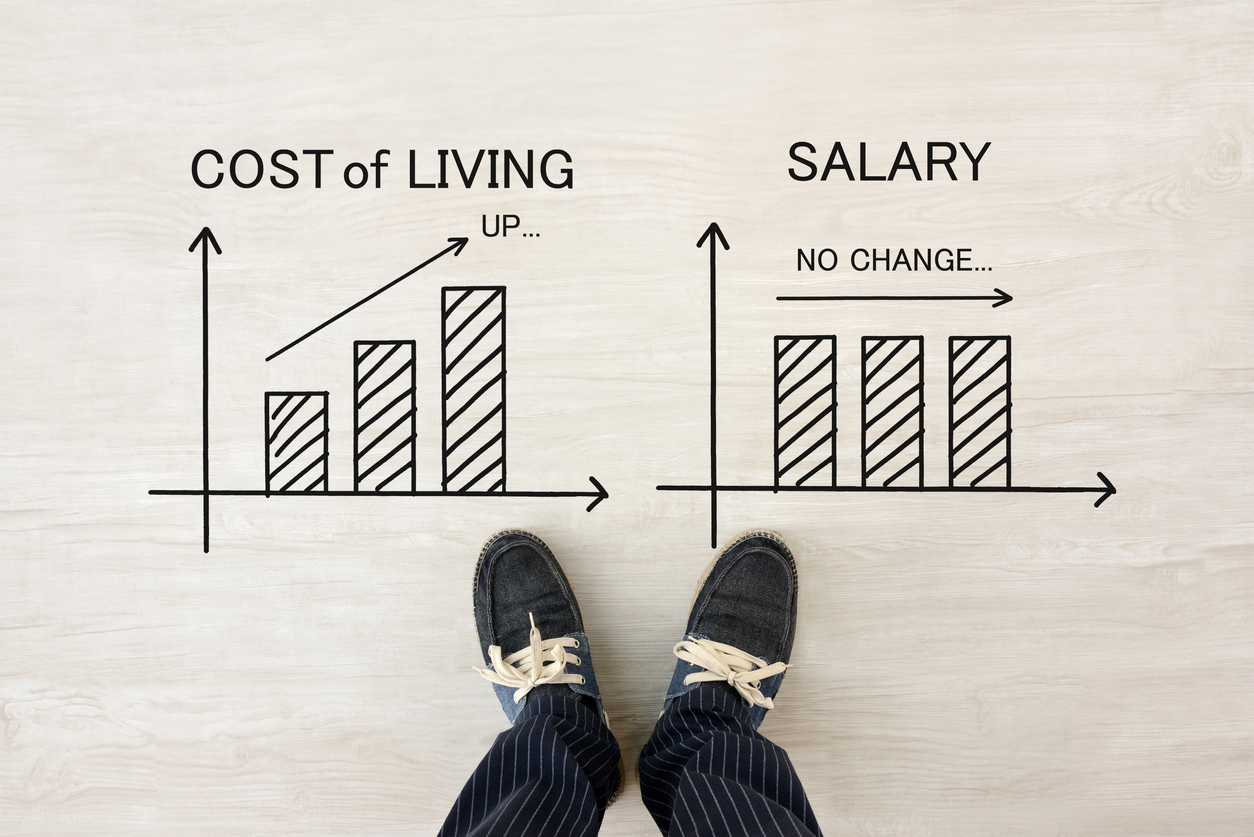The economy feels like a little bit of a roller-coaster these days, with the one-two punch of climbing inflation and rising interest rates. Who thought we’d ever say “Remember the good old days” about the early months of the pandemic? But guess what? The stay-at-home orders, and the stimulus checks that followed, meant that Americans hit a household savings rate of a whopping 35% in 2020 and 2021— a rate that hadn’t been seen in decades.
But several months of inflation and high gas prices have thrown savings rates into a steep reversal. Now American households are setting aside just 4.4 percent of their after-tax income for savings, the lowest savings rate since 2008. It’s time to adjust for inflation now to make sure you don’t get off track.
Americans Are Dipping Into Pandemic Savings to Pay Bills
This means that many Americans are fueling their inflation-driven spending by dipping into — and often, exhausting — those savings gains they made in 2020.
If this sounds like you, now is the time to react and adjust to surging consumer prices, which increased by 9.1% in the most recent U.S. Labor Department report, hitting a 40-year-high. Your money now has almost ten percent less buying power and that requires savvy planning. And if you are carrying any credit card debt, you have to deal with the one-two punch of increased prices everywhere as well as
Smart Moves to Adjust for Inflation
- Skipping Restaurants: 75% of Americans plan to spend less on dining out and in bars — which also saves you money on gas, an instant twofer.
- Canceling Subscriptions: Some have called it “The Great Unsubscribe,” as huge numbers of Americans (35%) are now cutting off entertainment and shopping subscriptions that they signed up for during the stay-at-home pandemic.
- Trading Down on Brands: Large retail chains like Walmart, Kroger, and Dollar General reported that consumers are trading down to private-label brands when shopping for groceries. Beer and cigarette purchases are also seeing the trade-down effect.
- Finding Extra Side Work: As Americans watched their money’s spending power dwindle, many of them stepped up and stepped into side hustles or gig work in order to close the opening gap. You can look into being a driver for local big-box stores (like Spark Drivers for Walmart), get savvy about selling the clothes, tools, and household items you no longer use on sites like Poshmark, eBay, and Craigslist, or lean into your underused talent, whether that’s making jewelry or birthday cakes.
Make Your Moves and Stick With Them
As the economy tightens, Americans are beginning to rely on their credit cards once they’ve depleted their pandemic savings, says John Guiterrez from White Mountain Partners, a debt consolidation firm. “We are seeing increased calls for help from folks who are feeling the impact of the economy in their wallets,” he adds.
No matter where you decide to cut back, do it quickly and stick with it. From all appearances, it looks as if our roller-coaster economy isn’t going to come to an end anytime soon. And if you find yourself needing help managing burdensome credit card debt, reach out to the experts at White Mountain Partners to learn more about how debt consolidation can help you.


